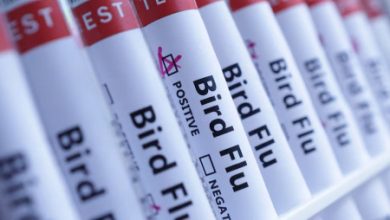
Introduction
In a world where health crises seem to emerge frequently, maintaining awareness without succumbing to panic is vital. One such health concern that demands our attention is Mpox. Understanding the importance of ongoing surveillance efforts can empower us to make informed decisions regarding our health and safety. This blog post will explore the various aspects of Mpox, its spread, current and advanced surveillance methods, and the importance of staying informed.
Understanding Mpox
Mpox is a viral illness that affects humans and certain animal species. It is caused by the Monkeypox virus, which is part of the Orthopoxvirus genus. The disease shares similarities with smallpox, although it is generally less severe. Symptoms can include fever, headache, muscle aches, swollen lymph nodes, and a distinctive rash that often appears on the face before spreading.
Transmission of Mpox occurs primarily through direct contact with infected animals or humans. The virus can enter the body through broken skin, respiratory droplets, or mucous membranes. Close contact with an infected person or contaminated materials, such as bedding, also poses a risk. Given these modes of transmission, Mpox is of significant concern due to its potential to cause outbreaks, particularly in communities with limited access to healthcare.
The concern surrounding Mpox is further heightened by its ability to cross species barriers, posing a threat to both human and animal populations. This zoonotic nature of the virus necessitates continuous monitoring and research to prevent widespread transmission and ensure public health safety.
Current Surveillance Methods
Surveillance of Mpox traditionally involves a combination of clinical diagnosis, laboratory testing, and epidemiological tracking. Clinicians play a crucial role in identifying cases based on symptoms and patient history. Laboratory testing, including PCR assays, is employed to confirm the presence of the virus and differentiate it from other similar illnesses.
In addition to clinical and laboratory approaches, epidemiological tracking is an essential component of surveillance. Public health authorities monitor case numbers, assess patterns of transmission, and identify potential hotspots for outbreaks. This data-driven approach enables timely responses to emerging threats and informs preventive measures.
Traditional surveillance methods, while effective, face challenges such as limited resources, delayed reporting, and underreporting in certain regions. These limitations highlight the need for advanced surveillance techniques to enhance accuracy, speed, and coverage.
The Latest in Mpox Surveillance
Recent advancements in Mpox surveillance have introduced innovative approaches to improve detection and response capabilities. One notable development is the integration of genomic sequencing. This technique allows for the identification of viral variants, tracking their spread, and understanding their impact on transmission dynamics.
Digital technologies have also revolutionized surveillance efforts. Mobile apps, online platforms, and social media monitoring enable real-time data collection and dissemination, enhancing the ability to track outbreaks and communicate essential information to the public. These tools not only facilitate rapid response but also engage communities in proactive health measures.
Collaboration among international health organizations, governments, and research institutions has fostered knowledge sharing and resource pooling, resulting in more comprehensive surveillance strategies. This global collaboration ensures that even remote and underserved areas can benefit from improved Mpox monitoring and intervention.
Importance of Staying Informed
Staying informed about Mpox and surveillance efforts is crucial for several reasons. Firstly, knowledge empowers individuals to recognize symptoms, understand transmission modes, and adopt preventive measures to protect themselves and their communities.
Secondly, staying informed reduces anxiety and panic caused by misinformation or sensationalized reports. By relying on reputable sources and verified data, individuals can make rational decisions based on accurate information rather than fear-driven assumptions.
Lastly, understanding surveillance efforts fosters a sense of shared responsibility. Every individual plays a role in preventing the spread of infectious diseases. Whether through personal hygiene practices, reporting suspected cases, or supporting public health initiatives, informed citizens contribute to broader efforts to contain outbreaks.
How to Stay Informed
Remaining informed about Mpox and surveillance without succumbing to panic requires a balanced approach. Start by following reputable health organizations such as the World Health Organization (WHO) and the Centers for Disease Control and Prevention (CDC). These organizations provide up-to-date information, guidelines, and resources to the public.
Engage with local health authorities to access community-specific information and updates. Many regions have dedicated health departments that offer guidance on preventive measures and steps to take in case of suspected cases.
Consider subscribing to newsletters or alerts from trusted news outlets that specialize in health reporting. This ensures you receive timely updates without being overwhelmed by a constant stream of information.
Engage with online forums, discussions, or social media groups focused on health topics. Participating in informed discussions can provide additional insights and perspectives while connecting you with others who share similar concerns.
Conclusion
In the realm of public health, staying informed is a powerful tool that empowers individuals to protect themselves and their communities. Understanding Mpox, its transmission, and the latest surveillance efforts can alleviate fears and promote rational decision-making. By remaining engaged with reliable sources and engaging in responsible health practices, we contribute to a safer, healthier world. Let’s commit to staying informed, supporting surveillance efforts, and making choices that prioritize well-being for ourselves and those around.



